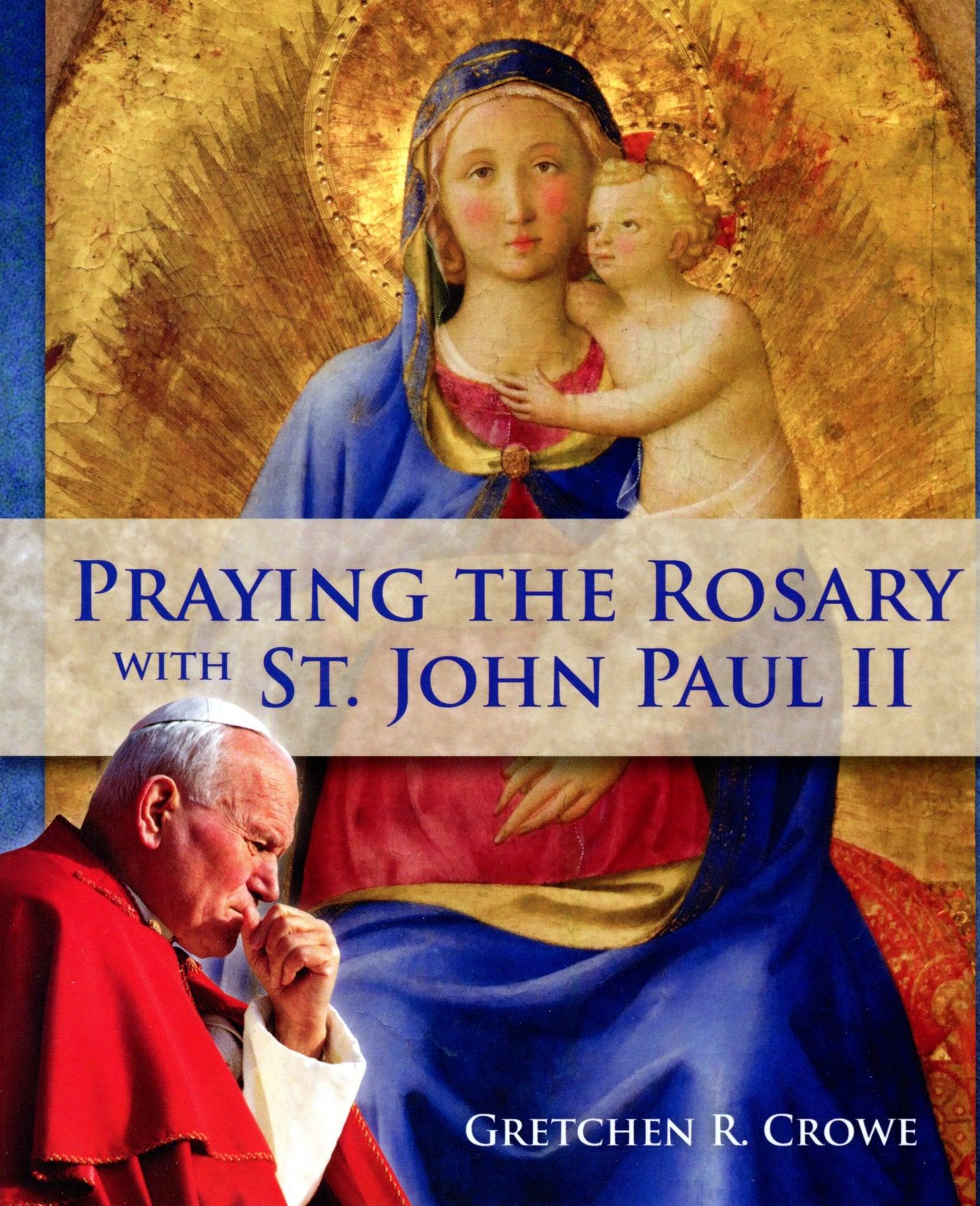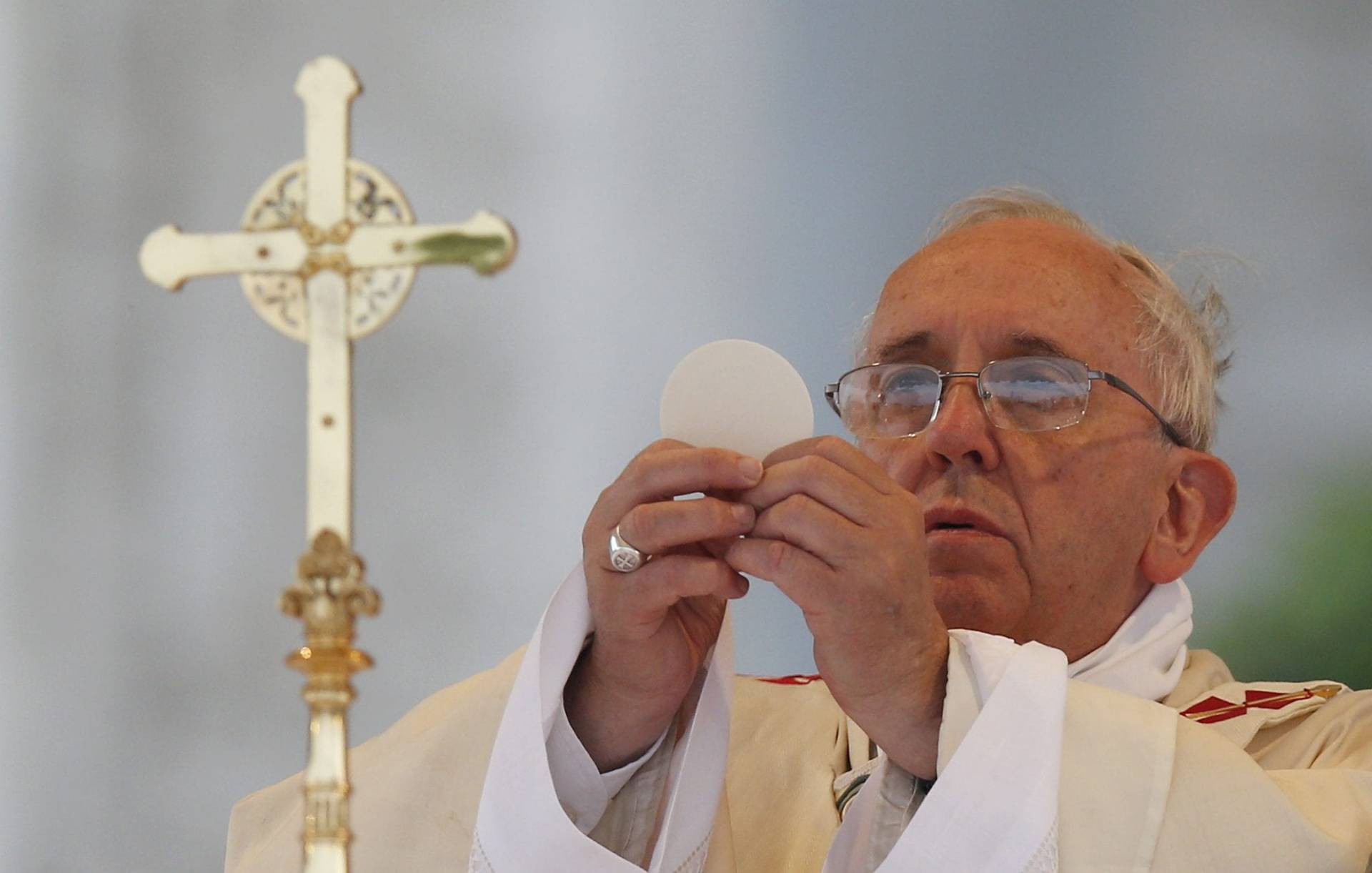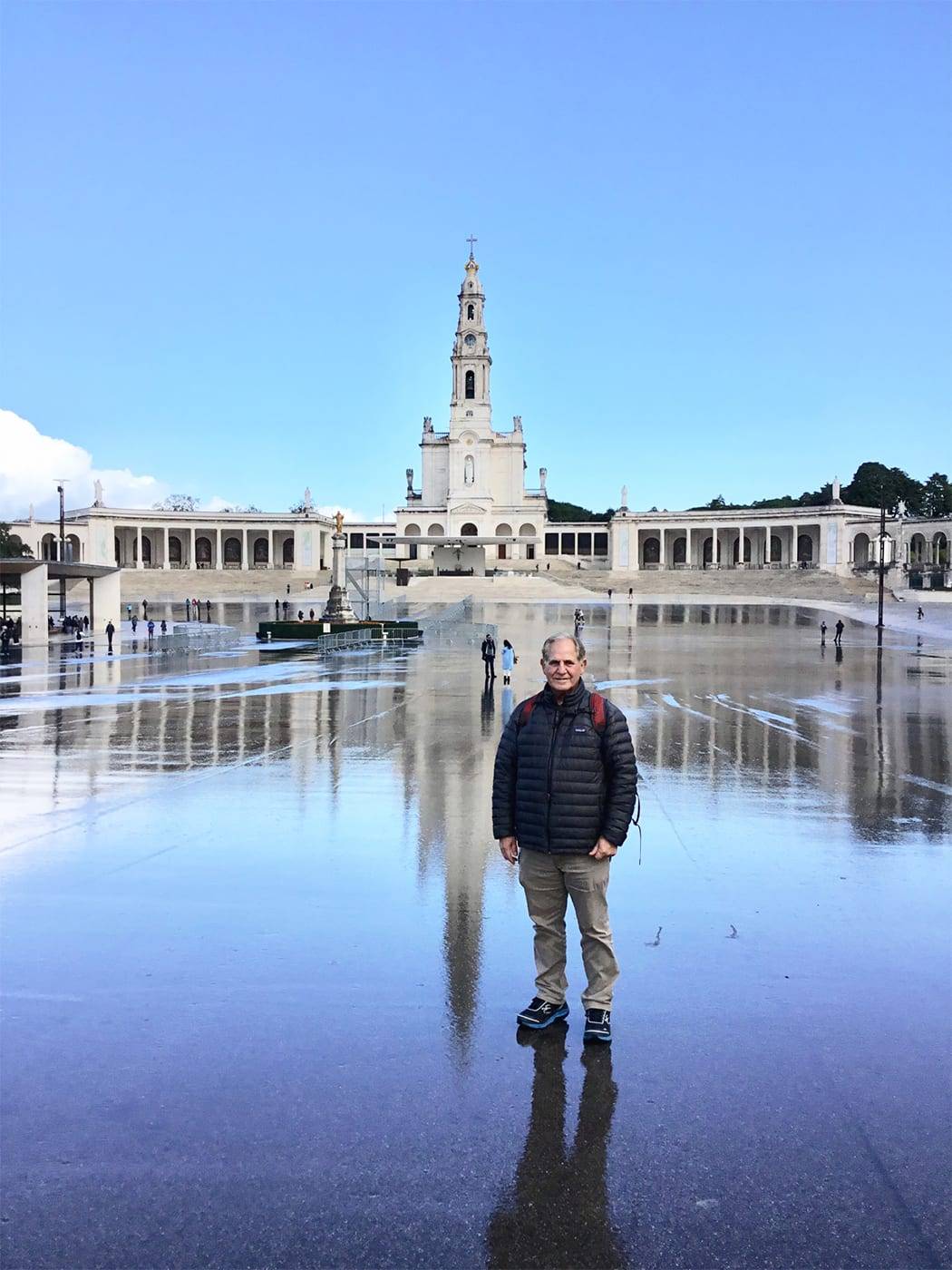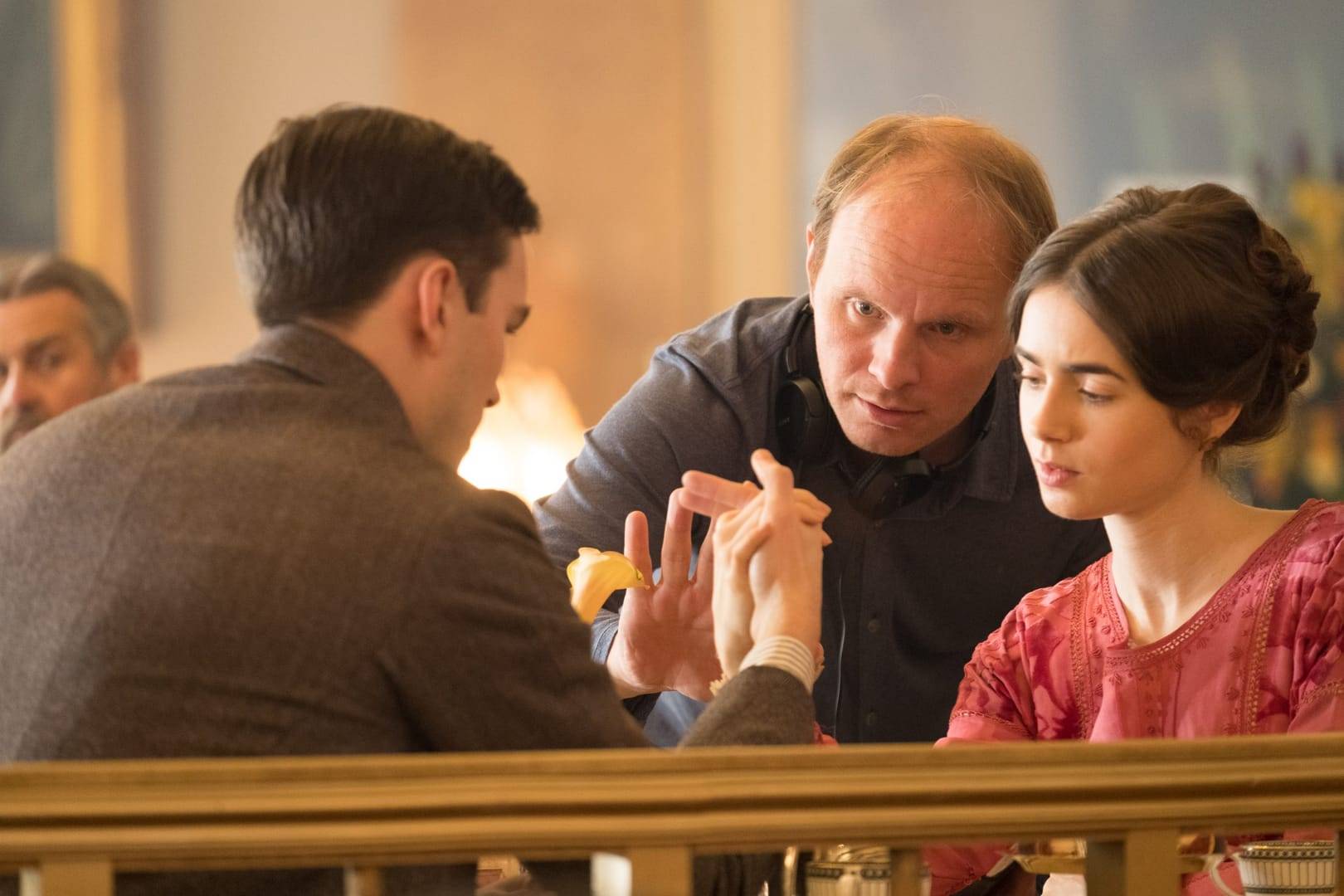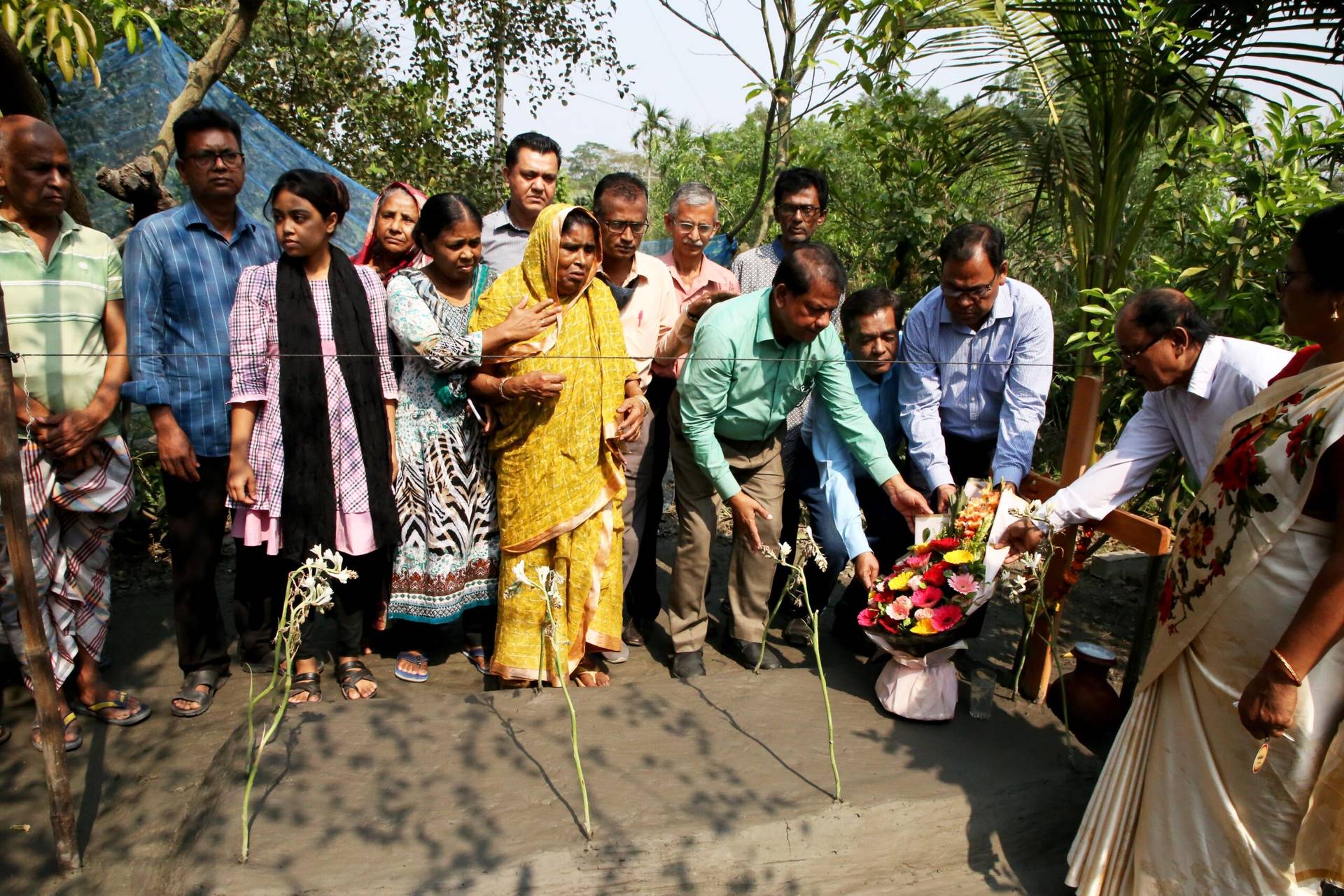FARGO, N.D. — It’s a cool July morning; the rising sun warms the contented faces of the 75 people gathered outside. Gently, rhythmically, they sing in Ojibwe, the language of the Chippewa people living in northern Minnesota. Facing the sky in each cardinal direction, they call on “grandfather and grandmother” to hear their thanks and answer their pleas.
The leader of the service, Rick Gresczyk, is a middle-aged man who lost his wife of 40 years two weeks earlier. As he holds a large clam shell containing a burning coal, the gathered worshipers approach. They pray, some aloud for the group to hear, others quietly, barely moving their lips. Each person then drops a small amount of dried tobacco onto the coal. The scent grows stronger, the smoke diffused through the air with the repeated wave of an eagle’s feather.
Then they clasp hands and begin another prayer.
“Our Father, who art in heaven, hallowed be thy name . . . ”
Native American culture, so closely tied to the natural elements, blended with Catholic faith. An odd pairing to some, but there is much common ground: Ritual, ceremony, spirituality.
“I just find that the Catholic Church in particular is very rich in rituals and symbols, and within our native culture, symbols and rituals are very important to us, because there is deep spiritual meaning in what has been given to us by our nature god,” said Sister Kateri Mitchell, a member of the St. Regis Mohawk Tribe in New York. “There is affirmation by what has been given to us by the earth.”
The prayer service was part of the Tekakwitha Conference, a gathering of Native American Catholics that has met annually since 1939 and provides an opportunity for individuals to worship together and strengthen the fusion of their native culture and spirituality with their faith.
See photos of the conference here.
“Roughly 25 percent of Native people of the United States are Catholics. And like many other Catholics, religious practice is mixed,” Philadelphia’s Archbishop Charles Chaput, himself a member of the Prairie Band Potawatomi Tribe, wrote in an email.
Archbishop Chaput said he incorporates Native American spirituality into his Catholic faith.
“I’ve gone on a vision quest and prayed in the sweat lodges. It’s a part of my heritage,” he wrote.
But that fusion of culture and religiosity was not always welcome by the church.
“Much of the church really did consider Indian spirituality to be devil worship, or at least problematic,” said Christopher Vecsey, professor of religion and Native American studies at Colgate University.
After Vatican II, however, “the notion was that local people express themselves through culture, and that they should be able to express their Catholicism through that culture as well.”
Tobacco has played a significant role in many Native American cultures, and the plant has been incorporated into some Catholic rituals. Sometimes, pipes are smoked near the altar during the consecration of the Eucharist.
Native American Catholics sometimes breathe in the smoke of burning sage, a healing and purification ritual called smudging.
Sister Mitchell said it’s important for American Indians to see their culture incorporated into Catholic rituals.
Praying and singing in indigenous languages, and priests wearing vestments with tribal flair, helps some Native Americans interpret Catholic theology. It allows them to gain a deeper understanding of the divine, she said.
Archbishop Chaput also sees a natural affinity between Christian and Native practices.
Native Americans “naturally think that if I have something and others don’t, I have a duty to share what I have with the other,” he wrote. “I give to you in your need, but then when I’m in need, it’s your duty to give to me. There’s an implicit kind of Christian virtue in that sort of exchange.”
Though there are early examples of Catholic missionaries practicing enculturation, the relationship between Native Americans and the Catholic Church was wrought with hardships.
Some Native Americans say Catholic and other Christian missionaries were complicit with government oppression of indigenous peoples. A Catholic bishop, Robert Garcia of Monterey, Calif., apologized on behalf of the church to Native Americans in 2012 Mass for slavery and genocide.
Jesuits in the Pacific Northwest, who ran many reservation schools, settled with 500 victims for more than $166 million in 2011, just one of a handful of stories about sexual abuse of Native Americans at the hands of Catholic clergy and religious.
Even Pope Francis is said to be considering getting involved.
Several Catholic organizations have asked him to repudiate a series of 15th-century papal decrees that paved the way for Catholic explorers to take land from non-Christian peoples on behalf of their monarchs, which they believe consigned a second-class status on American Indians and other indigenous groups.
While some Native American Catholics feel that history makes it difficult for them to be fully Catholic, others simply practice two distinct faiths.
“I’m Native American first,” George Torres, a member of the Sandia Pueblo in New Mexico, said. “There’s not really any tension between the two religions, because when we practice ours, we do what we have to do, as far as the Native way goes. And when we have the Catholic stuff going on, then we go and do that, too.”
The Native Americans living in the Sandia Pueblo, just north of Albuquerque, celebrate their patron saint, Anthony of Padua, on June 13 each year. They begin with Mass in the morning, “then they have they have a parade where everyone comes into the plaza where we dance,” said Torres, whose traditional name, Kuaua, means evergreen. “They make a makeshift altar out of trees, cottonwood trees, and the saint [statue] sits on there, and we dance all day.”
As religious orders that worked with Native Americans age and their numbers dwindle, many are no longer able to staff schools and social services agencies on reservations. That leaves dioceses, often dealing with their own priest shortages, to find available staff, some of whom lack the experience that religious orders brought to the tribes.
Sometimes, this leads to culture clash.
“There’s a need for education, and we have a lot to learn from one another,” Chet Cordell, a Catholic deacon who works with Native Americans in South Dakota, said.
Poverty, unemployment, and even religious education remain challenges for Native American Catholics living on reservations.
But still, the unique spirituality of American Indian Catholicism received international attention in 2012 when the first Native American saint from North America, Kateri Tekakwitha, a 17th-century Mohawk from the region around upstate New York, was canonized by Pope Benedict XVI.
“We have felt very affirmed by the saint,” Sister Mitchell said of her namesake. “Finally, the Catholic Church has recognized one of our own.”









